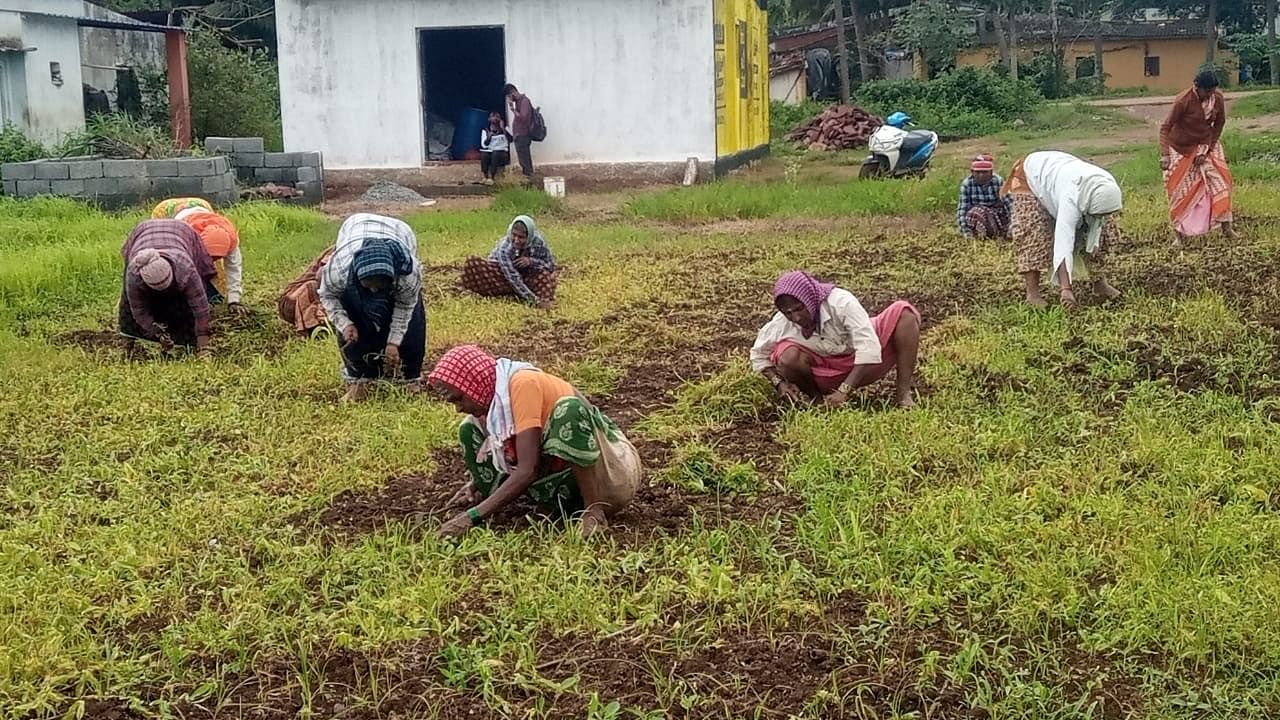
‘Sri Vinayaka Mahila Stree Shakti Sangha’, has revived 77 nearly forgotten varieties of ragi.
The last year, 2023, was declared “The International Year of Millets” by the United Nations. Fittingly, in Dharwad’s district’s Mattigatti village, 15 women came together to revive traditional varieties of ragi (finger millet). The women, members of the local self-help group (SHG) ‘Sri Vinayaka Mahila Stree Shakti Sangha’, dedicated themselves to the task, successfully reviving 77 nearly forgotten varieties of ragi.
The journey began in June 2023, when the ragi varieties sourced from different regions, found a home in a leased plot in the village. They include ‘gidda ragi’, ‘tene ragi’, ‘kallu ragi’, ‘unde ragi’, ‘koli motte ragi’, ‘piccha kaddi ragi’ and ‘naku raagi’, to name a few.
“We all come from farming families. Earlier, we used to cultivate groundnuts. The profits were not very high, but the joy was immeasurable. This year, we decided to breathe life back into ragi,” says Rathna Prakash Hosalli, the coordinator of the SHG. The efforts had the backing of Sahaja Samrudha, the organic farmers association, she adds.
"We grew 77 different varieties of ragi, but some of them did not fully mature due to unsuitable climate and soil conditions,” Rathna explains. The team then proceeded to collect the seeds and prepare them for the next stage. They cultivate the varieties in different sections and place name boards to identify each variety.
Shanth Kumar, program coordinator of Sahaja Samrudha, commends the effort of these women, stating, “We provided the seeds and technical support, but the labour, sweat and love all belonged to these women.”
The women faced an arduous journey, especially with the unpredictable rain situation. Sarojavva, another member of the SHG group, narrates the saga of six months spent tending to the field: “The rain played hide-and-seek, and our fields desperately needed water. We brought water from borewells, and cared for the plants using manure and buttermilk. Through our efforts, we have safeguarded our traditional ragi varieties.”
Amidst their dedication, it is crucial to recognise the broader context of ragi production in Karnataka. According to the Ministry of Agriculture and Farmers Welfare’s fourth Advance Estimate of 2021-22, out of the 16.96 lakh tonnes of ragi produced in India, Karnataka stands as the leading contributor with 11.33 lakh tonnes. The state is followed by Tamil Nadu with 2.21 lakh tonnes. Several SHGs across Karnataka, largely led by women, have been contributing to this production.
Acknowledging the broader importance of the Dharwad SHG’s work, G T Puthra, director of the Agricultural department, says, “Conserving old varieties of ragi in Karnataka is significant for several reasons. These traditional varieties often possess unique genetic traits that contribute to biodiversity, making them more resilient to pests, diseases, and environmental changes.” This genetic diversity can be crucial for developing more robust and adaptable crops in the face of evolving agricultural challenges.
Collaborative effort
The narrative does not stop with cultivation; it extends into a collaborative effort — through participatory varietal selection. Farmers from the district were invited to witness and engage in the examination of the grown varieties, to collectively select those best suited to the local soil and weather conditions. “During the participatory varietal selection, our focus is on spike quality. We meticulously assess each variety for optimal yield and resilience against diseases and worms. The spike must meet high standards for both human consumption and to be used as feed for livestock,” says Hanchinal, a local farmer who was involved in the activity.
“These women safeguard our ‘desi’ ragi varieties. The seeds will be shared, fostering a community where these traditional varieties thrive,” Shanth Kumar says. The major importance of desi varieties lies in their nutrient richness. They do not demand much water and manure, unlike hybrid varieties, he adds.
In the tapestry of adversity, these women stand as weavers of agricultural heritage, embodying the essence and life that community-driven initiatives breathe into the roots of tradition.
As the seeds the women cared for are shared with other farmers, a ripple effect of sustainability is set in motion, echoing through fields and communities. These empowered women, with their hands deep in the soil, are sowing not just seeds but a legacy — of preserving our roots for generations to come.